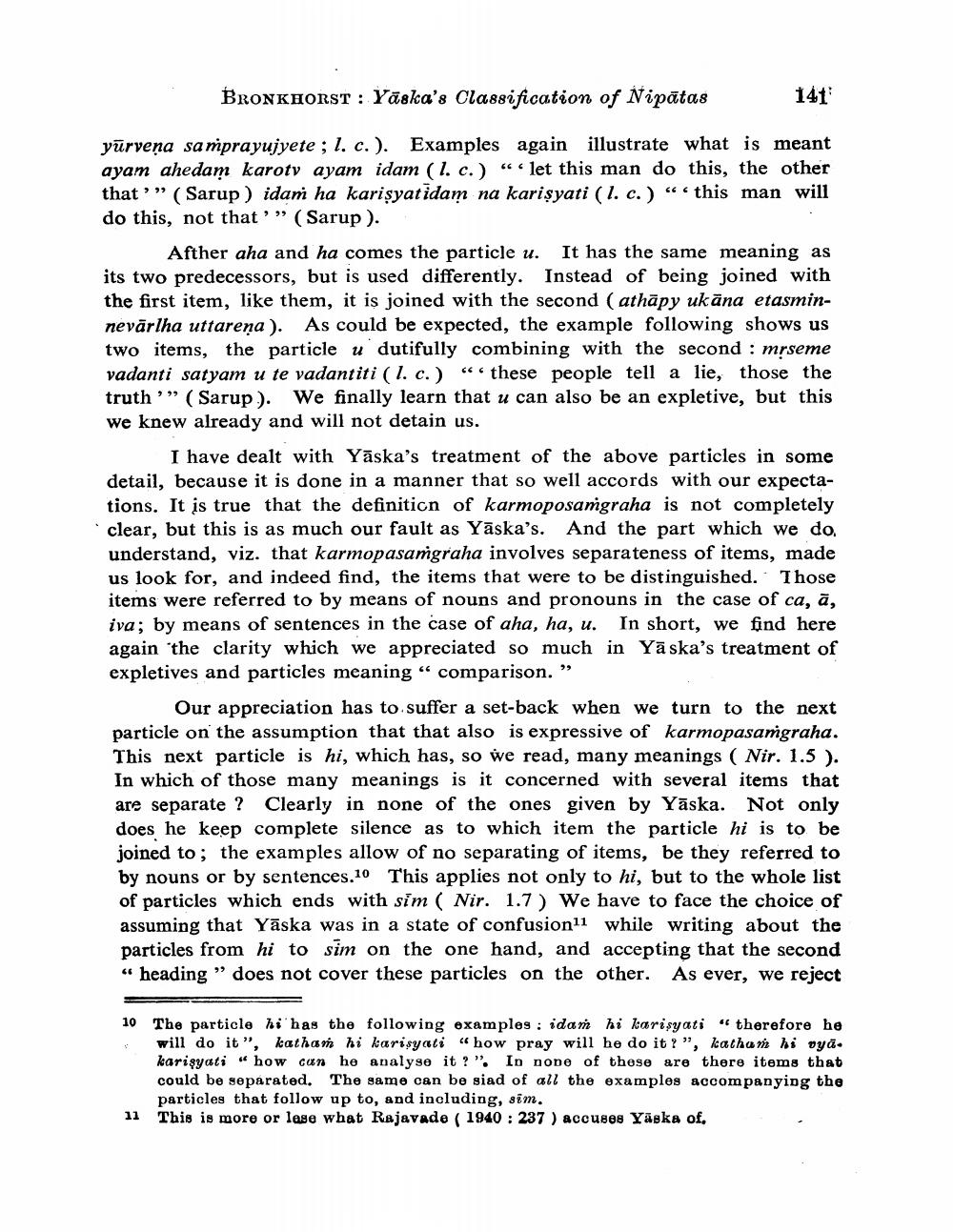Book Title: Yaskas Classification Of Nipatas Author(s): Johannes Bronkhorst Publisher: Johannes Bronkhorst View full book textPage 5
________________ BRONKHORST : Yāska's Classification of Nipātas 141 yürveņa samprayujyete ; 1. c.). Examples again illustrate what is meant ayam ahedam karoty ayam idam (1. c.) “ let this man do this, the other that'” (Sarup ) idam ha karisyatidam na karisyati (1. c.) “this man will do this, not that'" (Sarup). Afther aha and ha comes the particle u. It has the same meaning as its two predecessors, but is used differently. Instead of being joined with the first item, like them, it is joined with the second (athāpy ukāna etasminnevārlha uttareņa). As could be expected, the example following shows us two items, the particle u dutifully combining with the second : mrseme vadanti satyam u te vadantiti (1. c.) “ these people tell a lie, those the truth'" (Sarup.). We finally learn that u can also be an expletive, but this we knew already and will not detain us. I have dealt with Yāska's treatment of the above particles in some detail, because it is done in a manner that so well accords with our expectations. It is true that the definiticn of karmoposamgraha is not completely clear, but this is as much our fault as Yāska's. And the part which we do. understand, viz. that karmopasamgraha involves separateness of items, made us look for, and indeed find, the items that were to be distinguished. Those items were referred to by means of nouns and pronouns in the case of ca, ā, iva; by means of sentences in the case of aha, ha, u. In short, we find here again the clarity which we appreciated so much in Yā ska's treatment of expletives and particles meaning “ comparison.” Our appreciation has to suffer a set-back when we turn to the next particle on the assumption that that also is expressive of karmopasamgraha. This next particle is hi, which has, so we read, many meanings ( Nir. 1.5). In which of those many meanings is it concerned with several items that are separate ? Clearly in none of the ones given by Yāska. Not only does he keep complete silence as to which item the particle hi is to be joined to; the examples allow of no separating of items, be they referred to by nouns or by sentences.10 This applies not only to hi, but to the whole list of particles which ends with sim ( Nir. 1.7 ) We have to face the choice of assuming that Yāska was in a state of confusion11 while writing about the particles from hi to sim on the one hand, and accepting that the second “ heading” does not cover these particles on the other. As ever, we reject 10 The particle hi has the following examples : idan hi karisyati "therefore he will do it", katham hi karisyali “how pray will he do it?" kathan hi vyā. karisyati " how can he analyse it?". In none of these are there items that could be separated. The same can be siad of all the examples accompanying the particles that follow up to, and including, sim. 11 This is more or lase what Rajavade ( 1940 : 237 ) accuses Yaska of,Page Navigation
1 ... 3 4 5 6 7 8 9 10 11 12 13
